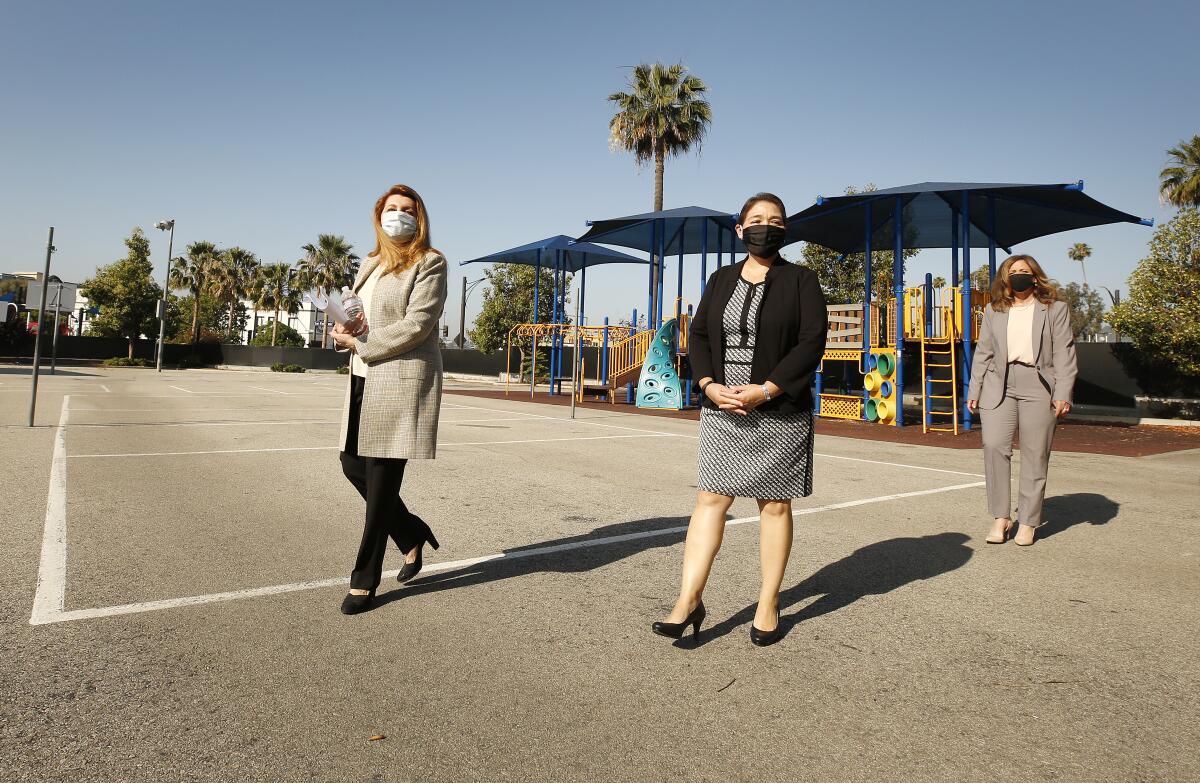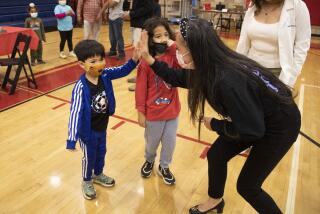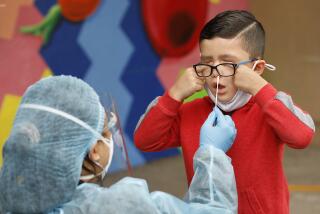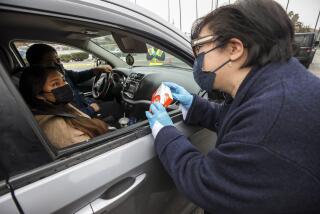Schools issue warning: Coronavirus testing and tracing are needed before campuses reopen

- Share via
Raising the possibility that campuses won’t reopen in the fall, leaders of the state’s two largest K-12 school systems on Friday demanded that public health authorities, not school districts, take the lead on setting up coronavirus testing and contact tracing of students and employees.
Los Angeles Supt. Austin Beutner and San Diego Supt. Cindy Marten — whose combined districts represent 915,000 children and workers — issued a public warning: Either their school districts get more funding and assertive health department intervention or they can’t consider reopening campuses in the fall.
“Opening our schools will not be as easy as separating desks or placing pieces of tape on the floor,” Beutner and Marten said in their statement. “A robust system of COVID-19 testing and contact tracing will need to be in place before we can consider reopening schools. Local health authorities, not school districts, have to lead the way on testing, contact tracing and a clear set of protocols on how to respond to any occurrence of the virus.”
Beutner and Martens also said it will be difficult enough to craft effective education programs and carry out reopening plans, without having to devise and pay for public health safety measures.
“Facilities will need to be reconfigured and supplies purchased to sanitize schools on a regular basis. Personal protective equipment will need to be provided to students and staff,” they said in the statement. “More teachers and staff will be needed to do this extra work. ... And state authorities have to provide the funding.”
The statement comes after the Los Angeles County Office of Education released guidelines Wednesday outlining measures seen as advisable or necessary to reopening schools.
Based on these guidelines, school districts will have to consider staggered schedules that would allow for no more than 12 to 16 in a classroom, where students also would take their meals. Everyone would wear masks all day, and recess or physical education could mean students playing alone with their own ball or hula hoop.
Schools also face questions of how often to sanitize, whether to screen students and staff as they enter and what to do when someone gets sick or could have been exposed to the virus.
Statewide, campuses have been closed since mid-March, with schools switching to remote instruction. The reopening of campuses is widely seen as essential to fully reopening the economy.
On Thursday, an alliance called the Education Coalition took aim at Gov. Gavin Newsom’s proposed budget, which calls for cuts to education funding of about 10%.
That spending plan would exacerbate “the already precarious financial situation of public schools,” said Vernon M. Billy, CEO of California School Boards Assn., which is part of the coalition.”It’s not realistic”
An alternate plan being developed in the Legislature would postpone cuts, allowing more time for a hoped-for federal bailout. Coalition members called it an improvement, but not nearly enough.
When asked Friday to respond to education leaders, Newsom offered little encouragement, calling the state’s $54.3-billion budget shortfall “without precedent” and pointed toward Congress for relief. Democrats in the House of Representatives have passed new emergency funding for schools and states, but the legislation faces steep hurdles in the Republican-controlled Senate.
Newsom also spoke about long-awaited state guidelines for reopening schools, which are still being completed.
“Foundational in that is an appropriate level of protective gear ... for our caregivers,” he said, referring to teachers, custodians, bus drivers and other staff.
The state’s top education official said it’s reasonable to question how campuses will be able to reopen. School districts are “saying the reality is we would need more revenue,” said state Supt. of Public Instruction Tony Thurmond. “And I don’t know that anyone would disagree. The governor wouldn’t disagree.”
He said school leaders are justified in asking for clarity “over who’ll do what.”
The state education department, he said, is trying to coordinate planning among education and health officials.
Thurmond expressed optimism that the state would provide substantial funding for the face coverings that will be needed.
L.A. Unified also pressed its case in joint letters with local union leaders. They called for more money, liability protection from COVID-19 related litigation and for a revised education funding formula that would not penalize a school district if a student stayed home because of illness.
In a separate letter to the county, the labor-district coalition called on other agencies to conduct the necessary testing and contact tracing for the coronavirus. They also want a common response plan for COVID-19 cases.
“Varying recommendations by Los Angeles County and the 26 cities that are within the Los Angeles Unified geographical boundaries will create confusion and unnecessary risk by treating students and employees differently,” said the letter, which was cosigned by the unions representing teachers, administrators and other nonteaching employees.
When asked Friday, county officials sidestepped whether students and school staffs should be tested periodically or screened before entering campus. The county is awaiting state guidance, said Barbara Ferrer, director of the Los Angeles County Department of Public Health.
L.A. Mayor Eric Garcetti said Friday that voluntary coronavirus testing is available for school staff and families as it is for all L.A. residents, with or without symptoms. But the city does not plan to take responsibility for campus testing, he added.
“The district has a budget just as we have a budget,” said Garcetti, whose own budget contains deep cutbacks.
The guidelines from the county education office contain no mandates, but “we do recommend that districts follow public health orders,” said county Supt. Debra Duardo, who shares concerns over funding.
Health officials should “offer clear and consistent direction,” she added. “We also understand that as the crisis evolves, information and conditions may change.”
Times staff writer Colleen Shalby contributed to this report.
More to Read
Sign up for Essential California
The most important California stories and recommendations in your inbox every morning.
You may occasionally receive promotional content from the Los Angeles Times.












